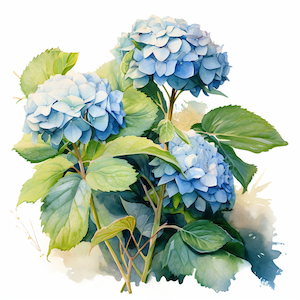Wilting in the Garden
What does a wilting plant mean? Whether you are a seasoned gardener or just starting your journey in the world of botany, chances are you have witnessed your fair share of wilting plants. While this common phenomenon may be disheartening, it can provide critical insights into the health and needs of your garden. This blog post aims to shed light on the causes of plant wilting, what it may signify in your garden, and how you can prevent it. Armed with the right knowledge, you can transform your wilting plants into thriving botanical beauties.
What Causes Plant Wilting?
Understanding plant wilting starts with a basic grasp of plant physiology. Wilting usually occurs due to inadequate water, extreme weather conditions, or a combination of both. It can also be a sign of disease or infestation. The primary causes include:
- Under-Watering or Over-Watering: Just like humans, plants require a balanced intake of water. Too little will cause them to dry out and wilt, while too much can suffocate the roots, leading to wilting and eventually root rot.
- Extreme Weather Conditions: Intense heat can cause plants to wilt, as it increases transpiration, making the plant lose water faster than it can absorb it. On the other hand, freezing temperatures can damage plant tissues leading to wilting.
- Disease and Infestation: Certain fungal, bacterial, or viral diseases can cause plants to wilt. Likewise, infestation by pests like aphids, beetles, or mites can lead to a similar outcome.
Unveiling What Wilting Plants Could Mean for Your Garden
- Underlying Soil and Watering Issues: If most of the plants in your garden are wilting, this could signify an issue with your soil’s water retention or a problem with your watering routine.
- Climatic Stress: A wilting plant can indicate that your garden is suffering from weather stress. It could mean that the plants you’ve chosen aren’t the right fit for your area’s climate.
- Possible Disease or Pest Outbreak: Widespread wilting can be an early warning sign of a disease or pest outbreak. Early detection can help save other plants and prevent widespread damage.
Effective Measures to Prevent Plant Wilting
- Proper Watering: Ensure your plants are getting the right amount of water. Usually, it’s better to water deeply and less frequently to encourage the growth of deep roots that are more drought-resistant.
- Right Plant, Right Place: Always choose plants that are suitable for your region’s climate. Some plants can tolerate heat and drought, while others need cooler, moist conditions.
- Regular Check-ups: Regularly check your plants for any signs of disease or pests. If detected early, most issues can be effectively managed or eradicated.
Highlighting the Most Commonly Wilting Plants
Gardening can be a challenge, especially when some plants are more prone to wilting than others. It’s essential to understand which plants are often affected, their specific needs, and how to address these issues. Here are some commonly wilting plants and how you can ensure they thrive:
- Tomato Plants: Tomatoes are highly susceptible to wilting, often as a result of inconsistent watering, heat stress, or diseases like Fusarium and Verticillium wilt. Ensure proper watering and consider using mulch to retain soil moisture. Regularly inspect for any signs of disease.
- Cucumbers: Like tomatoes, cucumbers are also prone to wilting. Inadequate or excessive water, combined with diseases like bacterial wilt and Fusarium wilt, can often lead to droopy leaves. To combat this, ensure good soil drainage and regular but balanced watering.
- Hydrangeas: These beautiful flowering plants are notorious for wilting, especially during the hotter parts of the day. They love water and can require a lot, particularly on hot days, but too much can lead to root rot. Plant them in well-draining soil and provide ample shade to help prevent wilting.
- Impatiens: Known for their vibrant blooms, Impatiens may wilt due to underwatering or overwatering, intense sunlight, or infestations of pests such as aphids. Planting them in partial to full shade and keeping the soil consistently moist can help keep these flowers healthy and vibrant.
- Pepper Plants: Pepper plants can wilt due to a range of factors, including insufficient water, nutrient deficiency, or diseases like bacterial wilt. Regular watering, proper fertilization, and routine inspection for disease can help keep pepper plants thriving.
- Rhododendrons: These evergreen plants can wilt when exposed to too much sunlight, insufficient water, or root rot. Rhododendrons appreciate well-draining soil and afternoon shade to protect them from intense sunlight.
By understanding the specific needs of these commonly wilting plants, you can create the ideal conditions for them to thrive. The key is to monitor your plants carefully, adjust their care as needed, and remember that with patience and attentiveness, you can create and maintain a lush, healthy garden.
Wilting plants are not just a disappointing sight; they can be a barometer indicating the overall health of your garden. By paying close attention to your plants and their needs, you can identify any issues early and take the necessary steps to restore your garden to its full potential. Remember, a thriving garden is a product of consistent care, attention, and understanding. Happy gardening!










